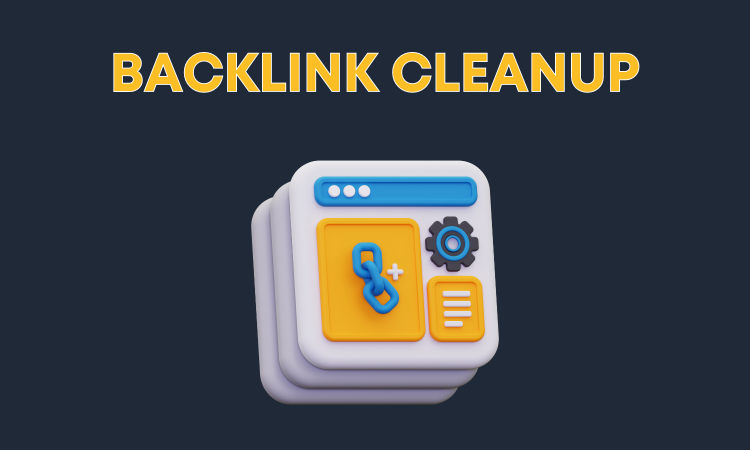
When optimizing your website for search engines, have you ever considered the impact of a backlink cleanup? Uncovering this process’s significance could be the missing piece in enhancing your SEO strategy. By peeling back the layers of what a backlink cleanup entails and the benefits it can bring, you might find yourself on the path to unlocking the hidden potential for your site’s performance.
Understanding Backlink Cleanup
To improve your website’s SEO performance effectively, you must understand the concept of backlink cleanup. Backlink cleanup involves removing or disavowing harmful or low-quality backlinks to your website.
These backlinks can negatively impact your site’s credibility and search engine rankings. Conducting a thorough backlink cleanup ensures that only high-quality, relevant backlinks are directing traffic to your site.
This process helps search engines like Google better understand your website’s authority and trustworthiness, leading to improved SEO results. Regularly monitoring and managing your backlink profile is essential for maintaining a healthy link profile and boosting your site’s visibility in search engine results pages.
Impact on Search Engine Rankings
A strong backlink cleanup strategy can significantly impact your website’s search engine rankings. By removing harmful or low-quality backlinks, you improve your site’s reputation and trustworthiness in the eyes of search engines like Google.
When search engines see that your site is linked to reputable and relevant sources, they’re more likely to rank your pages higher in search results. This can increase organic traffic, better visibility, and the number of potential customers who find your website.
Additionally, a clean backlink profile can help prevent search engine penalties, ensuring that your SEO efforts aren’t hindered by poor-quality backlinks. Monitoring and maintaining your backlink profile is crucial for sustaining and improving your search engine rankings.
Identifying Harmful Backlinks
Improving your website’s search engine rankings involves identifying harmful backlinks that could negatively impact your online visibility. Harmful backlinks come from low-quality or spammy websites, link farms, or irrelevant sources.
You can use tools like Google Search Console, SEMrush, or Moz’s Link Explorer to identify these detrimental backlinks. Look for backlinks from websites with low domain authority, suspicious anchor text, or many outbound links. Additionally, check for links from websites in completely unrelated industries or regions.
Benefits for SEO Results
Enhancing your website’s search engine rankings requires leveraging the positive impact of high-quality backlinks. By conducting a backlink cleanup, you can remove harmful links that may be dragging down your SEO efforts. This process helps improve your website’s authority and credibility and enhances the overall user experience.
With a clean backlink profile, search engines are more likely to view your website as a trustworthy source of information, leading to higher rankings in search results. Additionally, eliminating toxic backlinks can prevent potential penalties from search engines, ensuring that your SEO efforts aren’t hindered by low-quality or spammy links.
A backlink cleanup can significantly boost your website’s visibility and organic traffic.
Implementing Backlink Cleanup
Conduct a thorough audit of your current backlink profile to implement backlink cleanup effectively. Identify toxic or spammy backlinks that may be harming your SEO efforts.
Utilize tools like Google Search Console, SEMrush, or Ahrefs to gather data on your backlink profile. Once you have compiled a list of undesirable backlinks, contact the webmasters of those sites and request removal.
If direct removal requests fail, disavow those toxic links using Google’s Disavow Tool to signal search engines that you don’t want those links to be considered.
Regularly monitor your backlink profile to ensure that new harmful backlinks are promptly addressed, maintaining a clean and healthy link profile for improved SEO results.
Frequently Asked Questions
Can Backlink Cleanup Be Automated for Efficiency?
Yes, backlink cleanup can be automated for efficiency. Utilizing tools and software allows you to streamline the process, identify toxic links, and disavow them swiftly.
This automated approach saves time and ensures a healthier backlink profile.
Are There Penalties for Not Cleaning up Harmful Backlinks?
Not cleaning up harmful backlinks can lead to penalties from search engines, impacting your website’s ranking and visibility.
It’s crucial to regularly check and remove toxic links to maintain a healthy SEO profile.
How Long Does It Take to See SEO Improvements?
Improvements in SEO visibility can vary, typically taking 3-6 months to see significant changes.
Consistent efforts in content creation, backlink building, and technical optimizations are crucial.
Monitoring analytics regularly allows you to track progress and adjust strategies as needed.
Can Backlink Cleanup Affect Website Traffic?
Yes, backlink cleanup can significantly affect website traffic.
Should All Backlinks Be Removed During Cleanup?
You shouldn’t remove all backlinks during cleanup. Focus on low-quality or spammy links that harm your SEO, and keep valuable, relevant backlinks that contribute positively.
Strategic cleanup preserves your site’s credibility and boosts SEO performance effectively.
Conclusion
In conclusion, conducting a backlink cleanup is crucial for improving your website’s SEO results. Removing or disavowing harmful backlinks can enhance your site’s authority, credibility, and user experience.
This process can lead to higher search engine rankings, prevent penalties, and ultimately boost visibility and organic traffic. Regularly review and clean up your backlink profile to ensure sustained SEO success and improved website performance.




